Guantanamo Bay explained in maps and charts
The world’s most infamous detention centre, ‘Gitmo’, has become a symbol of human rights abuses.
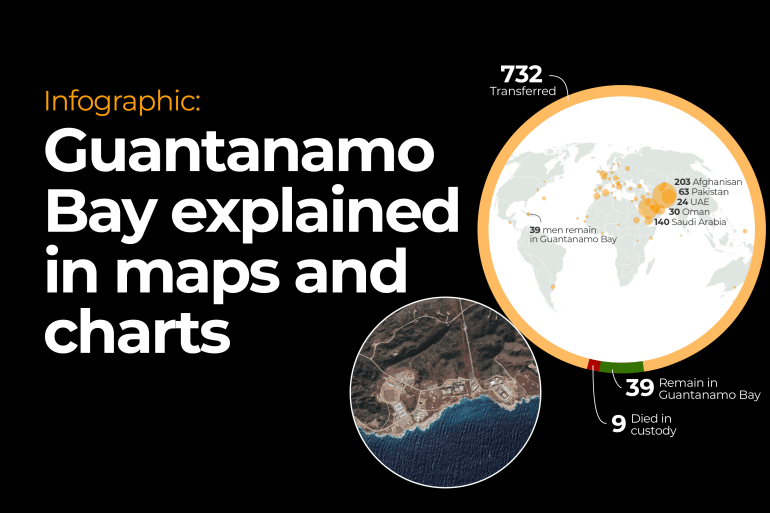
On January 11, 2002, exactly four months after the September 11, 2001, attacks, the United States set up a high-security prison in its Guantanamo Bay base.
Since then, “Gitmo” has held up to 780 detainees, prisoners of the so-called “war on terror”. Today 39 remain.
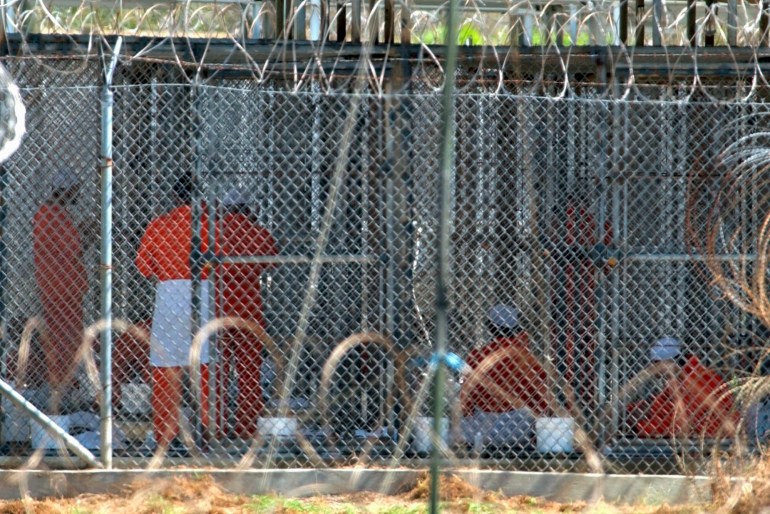
Established during the presidency of George W Bush, the offshore jail was meant to hold suspected al-Qaeda members, captured during the invasion of Afghanistan in 2001.
To date, of the 780 detainees, 732 have been released without charge, many after being detained for more than a decade without legal means to challenge their detentions.
Keep reading
list of 4 itemsMapping Israel-Lebanon cross-border attacks
Eid Mubarak: Hear greetings in different languages
When is Eid al-Fitr 2024 and how is it celebrated?
Where is Guantanamo Bay?
Located on the eastern tip of Cuba, the Guantanamo Bay Naval Base is 116sq km (45 sq miles) and has been under US control since the end of the 19th century.
The base is a hotly debated issue between the US and Cuba. For decades, Cuba insists that the US hand back the territory it took by force in 1898 and subsequently permanently leased from the government of Tomas Estrada Palma, Cuba’s first president, in 1903.
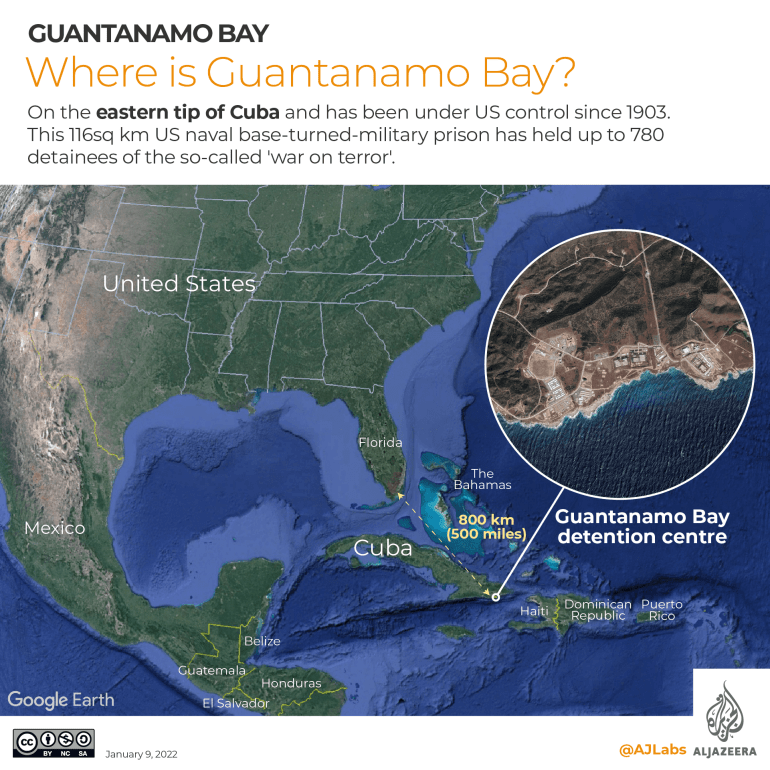
Initially set up as a temporary detention facility dubbed “Camp X-Ray” in 2002, the prison complex now comprises seven detention camps labelled according to the order they were built. According to the US military, all remaining detainees are in camps five and six.
Detainees by nationality
Since January 11, 2002, at least 780 detainees from 48 countries have been held in Guantanamo Bay. Only 16 were ever charged with criminal offences, according to Human Rights Watch.

The countries with the highest number of detainees include: Afghanistan (219), Saudi Arabia (134), Yemen (115), Pakistan (72) and Algeria (23) according to the New York Times’ Guantanamo Docket tracker.
The youngest detainee was 15-year-old Omar Khadr, a Canadian citizen who was released in 2015 after 13 years locked away.
In 2017, the Canadian government paid Khadr a 10.5 million Canadian dollar settlement ($8.1m) and formally apologised for any role the government played in the abuses he suffered as an inmate at Guantanamo Bay.
The oldest prisoner still being held is 73-year-old Saifullah Paracha, a Pakistani national who has spent the last 17 years in detention without charge.
In May, the US approved Paracha’s release concluding only that he was “not a continuing threat” to the US. Paracha could be returned home in the next several months according to his lawyer.
What happened to the 780 detainees?
Since 2002, 732 Guantanamo detainees have been sent home or to other countries through prisoner transfer agreements. There are 39 still held. Nine died in custody.
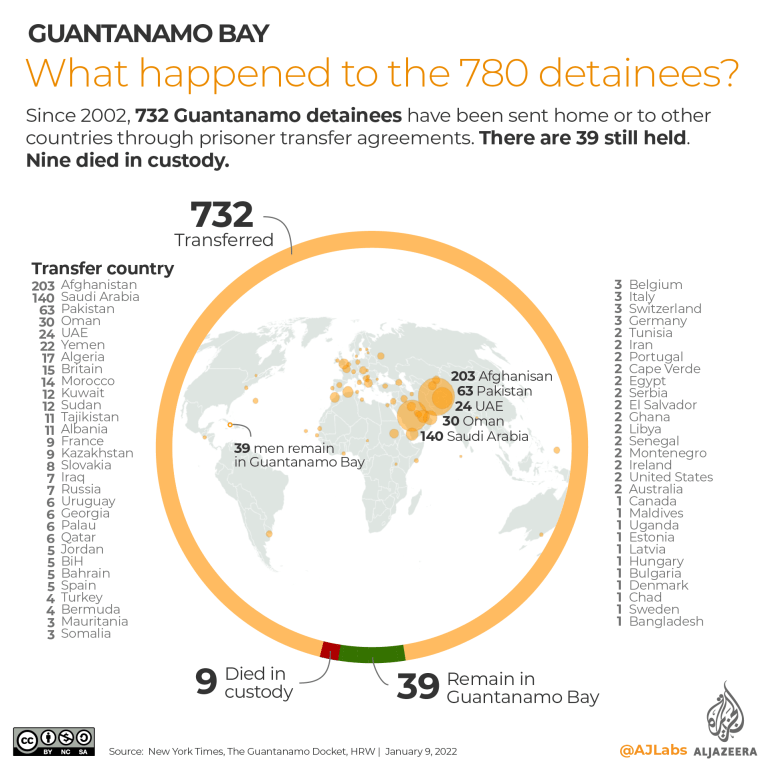
The countries that have taken the highest number of detainees include: Afghanistan (203), Saudi Arabia (140), Pakistan (63), Oman (30) and the UAE (24) according to the Guantanamo Docket.
Of the 39 detainees remaining, 17 are being held indefinitely with no recommendation for transfer, 10 are eligible for transfer if security conditions are met, 10 have been charged by the US military, and two have been convicted.
Closing the prison
Spanning four presidencies and nearly 20 years, the world’s most infamous detention centre has become a symbol of human rights abuses.
Several international human rights groups, including HRW, Amnesty International and the International Committee of the Red Cross have repeatedly condemned the alleged human rights violations, including harsh interrogation methods that critics say amounted to torture.
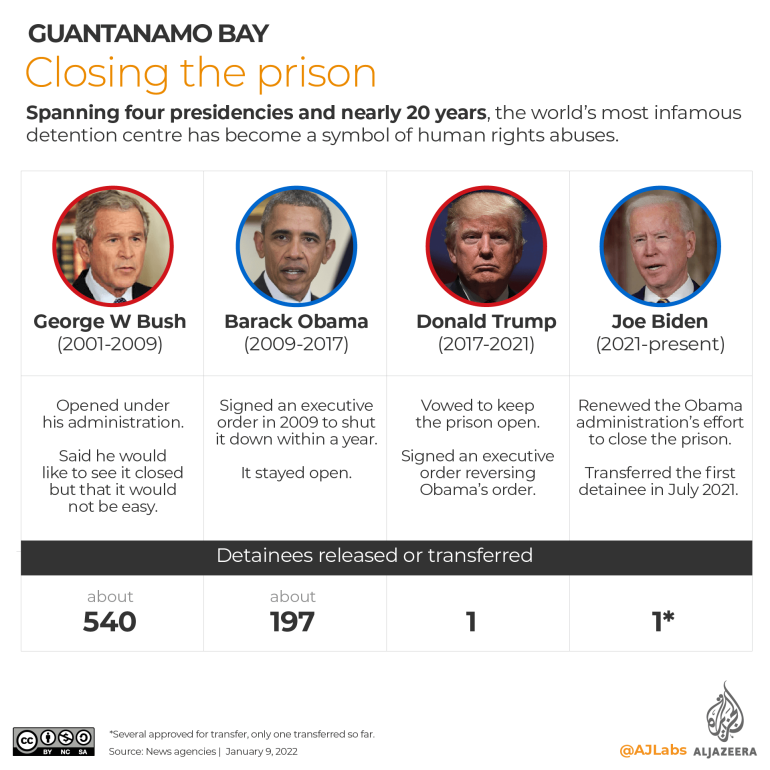
In 2006, UN Secretary-General Kofi Annan said the US should close the prison at Guantanamo Bay as soon as possible, backing a key conclusion of a UN-appointed independent panel.
During his presidency, George W Bush said he would like to see Guantanamo Bay closed but that it would not be easy.
His successor, Barack Obama, promised to close Guantanamo’s detention centre and on his second day in office signed an executive order to shut it down within a year. That never happened.
In 2018, former President Donald Trump vowed to keep the prison open and signed his own executive order reversing Obama’s order.
President Joe Biden has renewed the Obama administration’s effort to close the prison. In July 2021, Moroccan prisoner Abdul Latif Nasser became the first detainee transferred under the Biden administration. He had been held by the US since 2002 without being charged.
About 540 detainees were released during the Bush presidency (2001-2009), approximately 200 during the Obama administration (2009-2017), one during Trump’s presidency (2017-2021) and one during Biden’s current presidency.